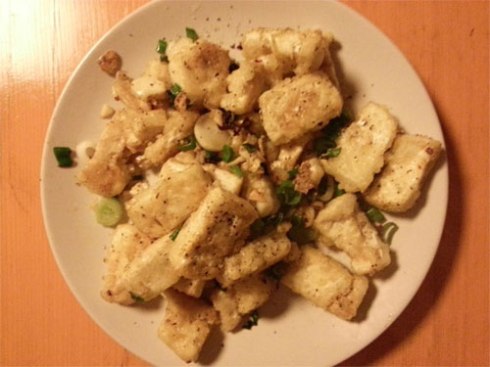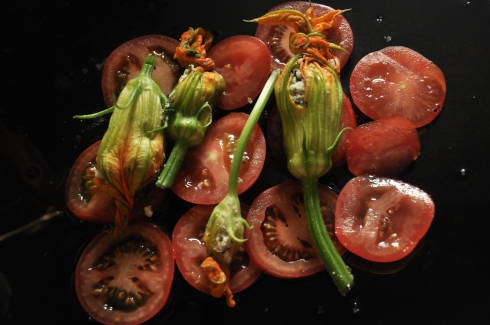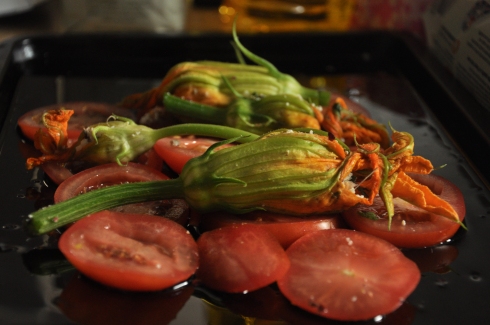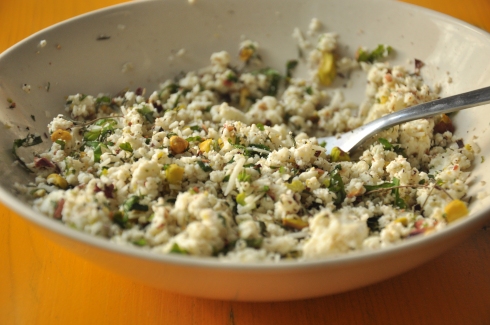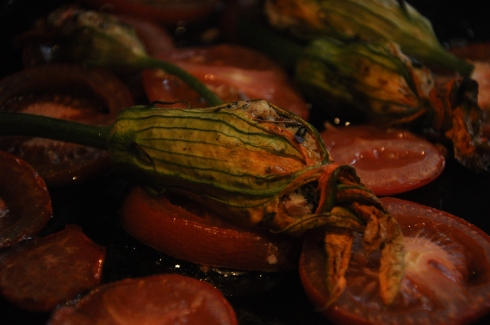OK. So this is an awful picture. But it’s a glorious dish. And it’s an awful picture because we don’t want to keep one bazillion recipes unpublished for never bothering to photograph our food anymore. So, sorry. But not sorry. You know?
Anyway, about 80% of the reason Woman will ever desire to go to a Vietnamese or Chinese restaurant is the possibility of therein consuming salt and pepper tofu. We used to love salt and pepper squid – particularly at Isarn in Islington – but since going veggie again we’ve found the veggie version better, with significantly reduced risk of stringy or chewy-ness.
So deal with the picture, and make the food. If you take a better picture, send it to us. Or maybe we should upgrade our camera phone.
- 400g tofu
- 1 C cornflour
- 3tsp sea salt
- 1.5 tsp cracked black pepper
- 1 spring onion
- 1 finely chopped Thai red chili (or a teaspoon of crushed chili flakes – preferably in oil)
- 1/2 lemon
- Oil for frying.
Cut tofu into cubes and press (we have it on a couple of paper towels, then weighted down with plates).
Mix the sea salt and pepper together.
Coat the tofu in cornflour, let sit for a minute or so, and shallow fry – will need a couple of minutes on either side. We don’t have a deep fryer and fried these babies in about 1cm of oil. Wait for it to get a little colour but not too brown. You may need to do this in batches. Set aside cooked tofu.
In a new pan (or having removed the majority of the oil), cook down the whites of the spring onion. When soft add the chili and squeeze of lemon. You might want to grate in some lemon zest. When onions are soft, throw in the pre-fried tofu, sprinkling the salt and pepper mix over it all. Toss through, over medium heat, until tofu is warmed. Throw in the sliced green bits of the spring onion.
You could use lemongrass instead of lemon and that would be fine, but we often find we just don’t go through lemongrass and so using lemon juice ends up far more economical. And ManWoman is nothing if not economical.
Estimated cost: £1.60
Musical accompaniment: Paul Kelly – the entire back catalogue
